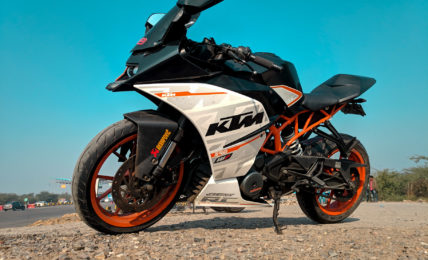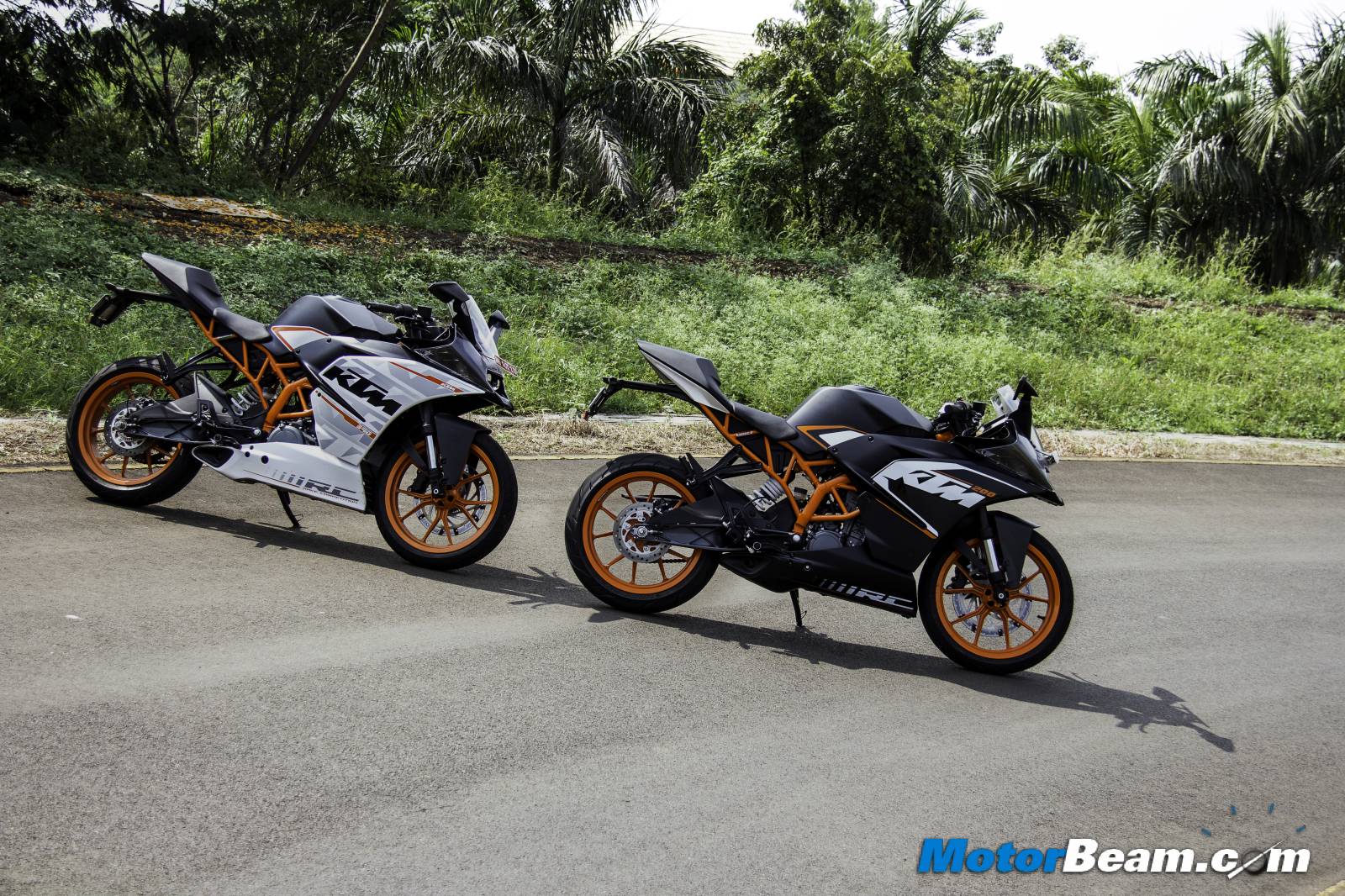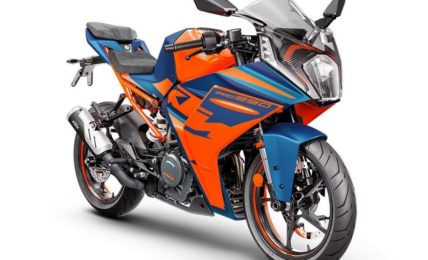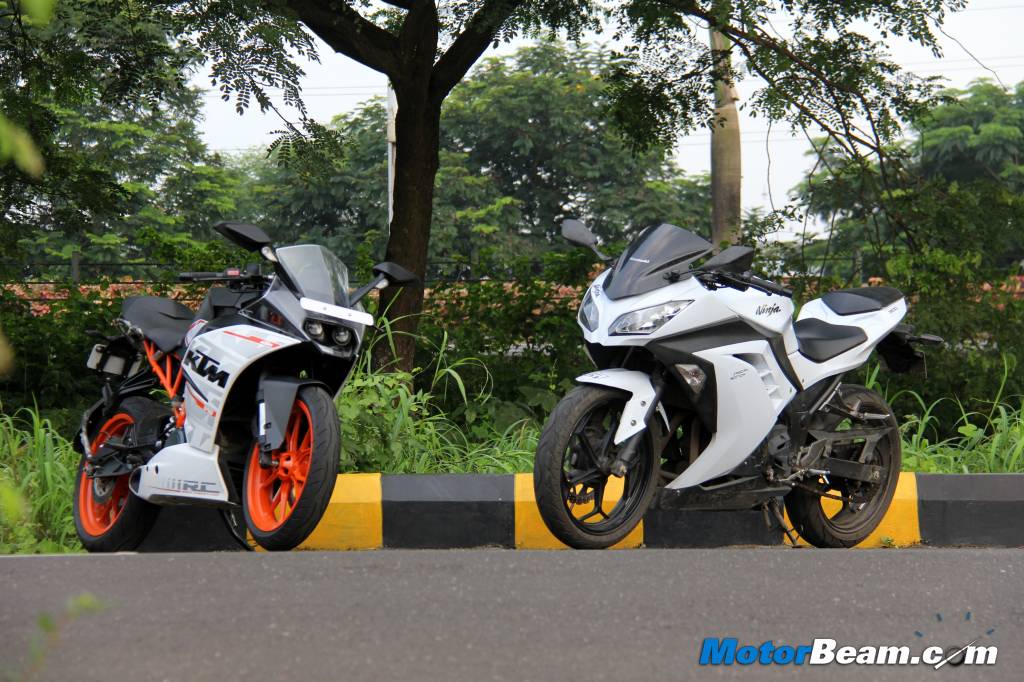
Shootout: KTM RC 390 vs Kawasaki Ninja 300
Price OTR Mumbai: Rs. 2.38 lakhs (KTM RC 390), Rs. 3.94 lakhs (Kawasaki Ninja 300)
The Ninja 300 finally meets its closest match, the RC 390 for one intense speed battle
Competition in the quarter-litre performance segment hasn’t been as intense as it is today. For a long time, Kawasaki was enjoying pure monopoly with the Ninja 250R and when Honda brought the CBR250R to give team green a tough fight, the folks who make the world’s fastest accelerating bike quickly developed an all new motorcycle (Ninja 300) to distance themselves from any sort of competition. The Ninja 300 was enjoying almost no competition, just like its predecessor. KTM launched the Duke 390 and while this bike had many things under its belly to give the baby Ninja a tough fight (we were the first people to put both of them head to head in a shootout), it wasn’t as direct a competition to the Kwacker due to the Austrian machine being a street-fighter. Now with the launch of the RC 390, Kawasaki has a serious fight at its hand as the Ninja 300 has finally found a direct rival. The RC 390 belongs to the same full-faired category as the Ninja 300 but which one is the better machine.
Motor Quest: Kawasaki launched the Ninja 300 in 2012 and the bike made its India debut last year. The RC 390 is the full faired version of the Duke 390 and was launched earlier this month. While prices differ drastically in India, globally the KTM and Kawasaki are priced awfully close to each other and are direct rivals.
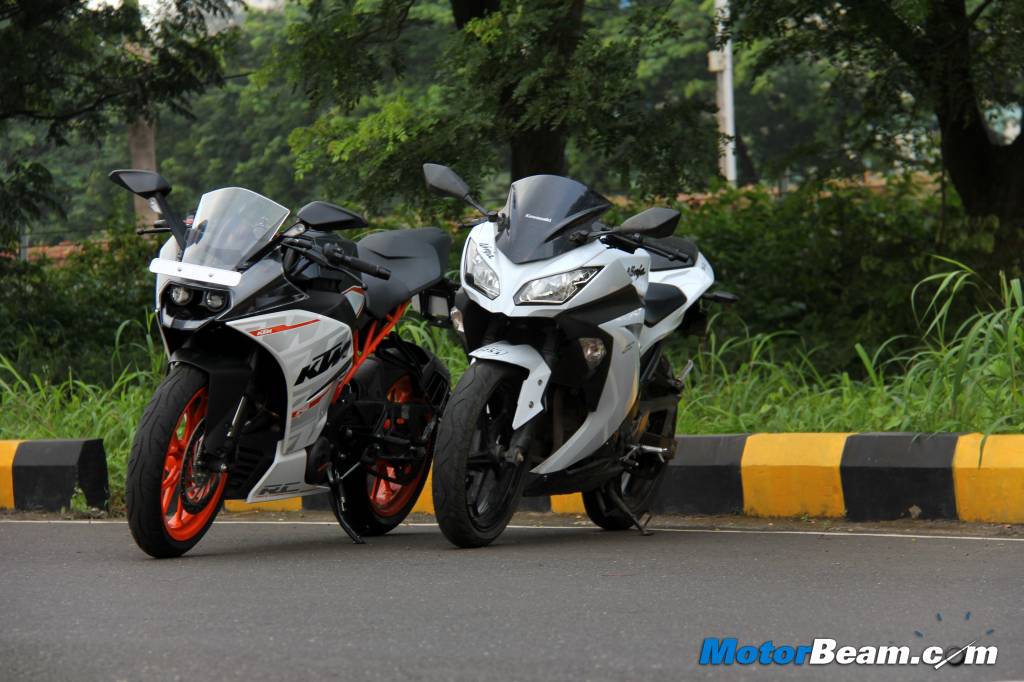
Styling – While styling is a subjective matter, there is no denying the fact that the Ninja 300 still has the wow factor in its appearance. Yes, the RC 390 is fresher and the design is also quite wicked but the way the Ninja has been finished along with its bigger dimensions, makes the Kwacker the better looking machine of the two, at least for us. The Kawasaki also has a bigger fairing, there are no exposed bits like on the KTM and the tyre hugger isn’t present, nor is there a quirky grab rail for the rider (on the right, behind the rider’s seat), instead Kawasaki has neatly tucked in a recess below the pillion seat, the KTM has a similar recess as well.
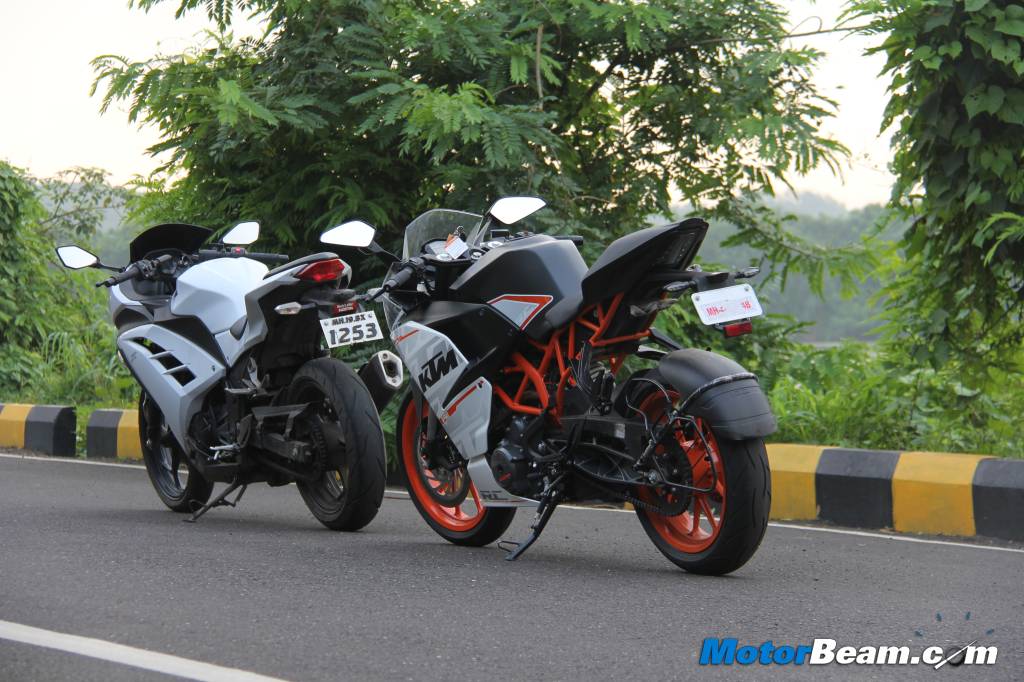
The fact that KTM shares the design of the RC 390 with the RC 200 is sure to rob away the exclusivity factor of the bikes. Some bits on the RC 390 are more appealing like the projector headlights (the KTM has better illumination at night), LED tail light, LED turn indicators, pillion seat which is finished like a cowl, orange coloured frame and wheels, and parking lights which can be used as daytime running lights (the Ninja 300 has a daytime running light but it isn’t as cool as the KTM). However, the fact that the Ninja 300’s design is more mature, less quirky and the bike looks a tad bigger helps it beat the RC 390 in the styling department. Its design has also stood the test of time and the Kawasaki looks as smashing today as it did a couple of years back.
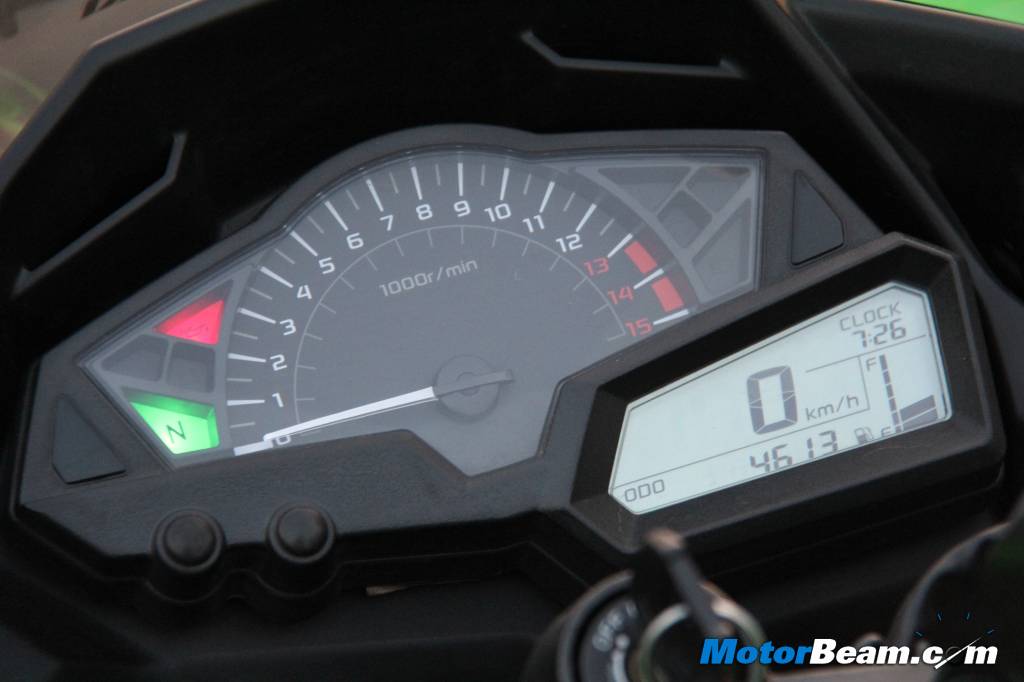
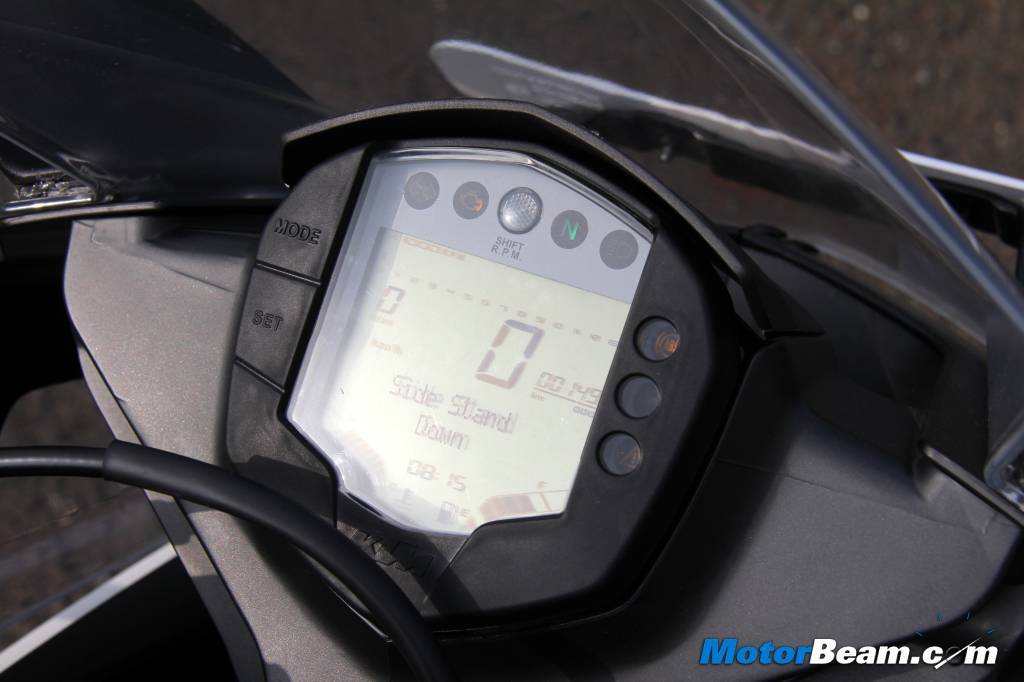
The Ninja’s cluster is bigger and more easier to read, the KTM’s console is fully loaded with loads of information
Instrument Cluster and Switchgear – The RC 390 uses an all digital instrument cluster but we have one big gripe with the layout, the tachometer is almost useless as it’s too small and the bike revs fast to its 10,500 RPM redline so you really can’t see the revs building as clearly as you can on the Ninja 300 which has an analogue tachometer. The fonts on the Kawasaki are also bigger and clearer making it much easier to read. But the Ninja misses out on a ton of information which the RC 390’s tech laden console has to offer. Right from distance to empty to average consumption and side stand indicator, the KTM has it all. So the console on the KTM is certainly better with more to offer but the Ninja’s switchgear has better quality although both bikes have piano black finish on the switches. The KTM does get backlit switches and overall we rate the RC higher in this department.
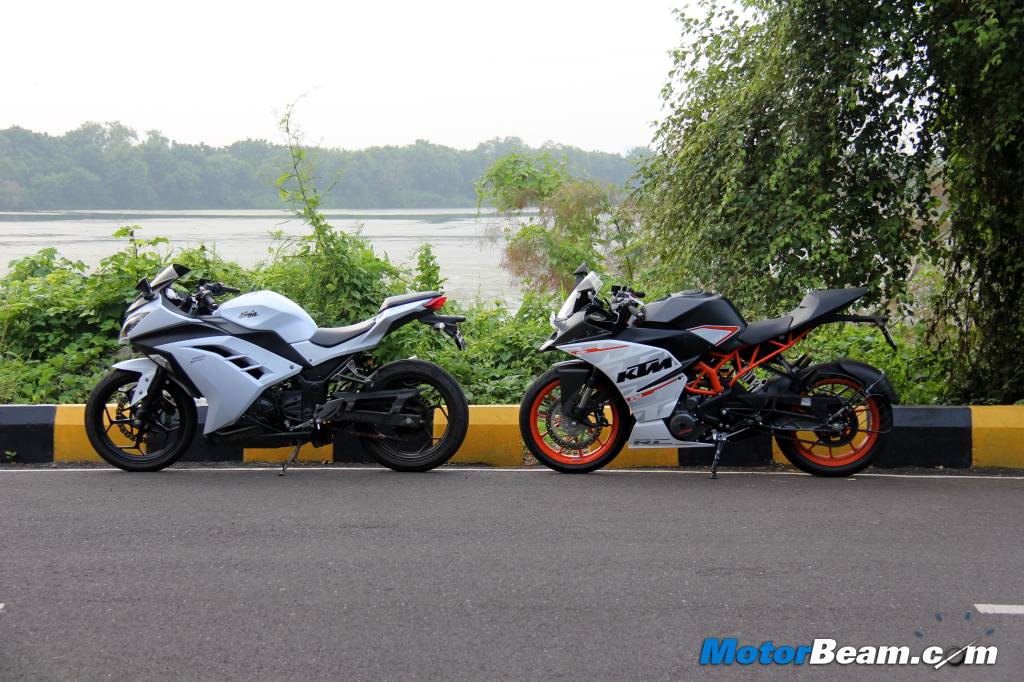
Ergonomics – While the Duke 390 is too upright, the RC 390 is too committed (for short and medium riders). Both the Ninja 300 and RC 390 use clip-on handlebars but the Kawasaki is much more comfortable and the positioning of the steering is a mix of comfort and sporty, not the same case with the KTM. The pegs on both bikes aren’t too rear-set but the Kawasaki ergonomics offer the best of both worlds to the rider (the pegs are a bit high but the seat height is lower than the RC). The pillion seat on both bikes is good but the Kawasaki is more suited for a pillion. It also has better rear visibility thanks to the traditional positioning of the mirrors while the RC has small stalks with big glass area but the mirrors don’t show a clear picture of what’s behind. The Kawasaki also has hooks under the pillion seat to tie luggage so you can easily tour on this bike without having to worry about where to mount your luggage.
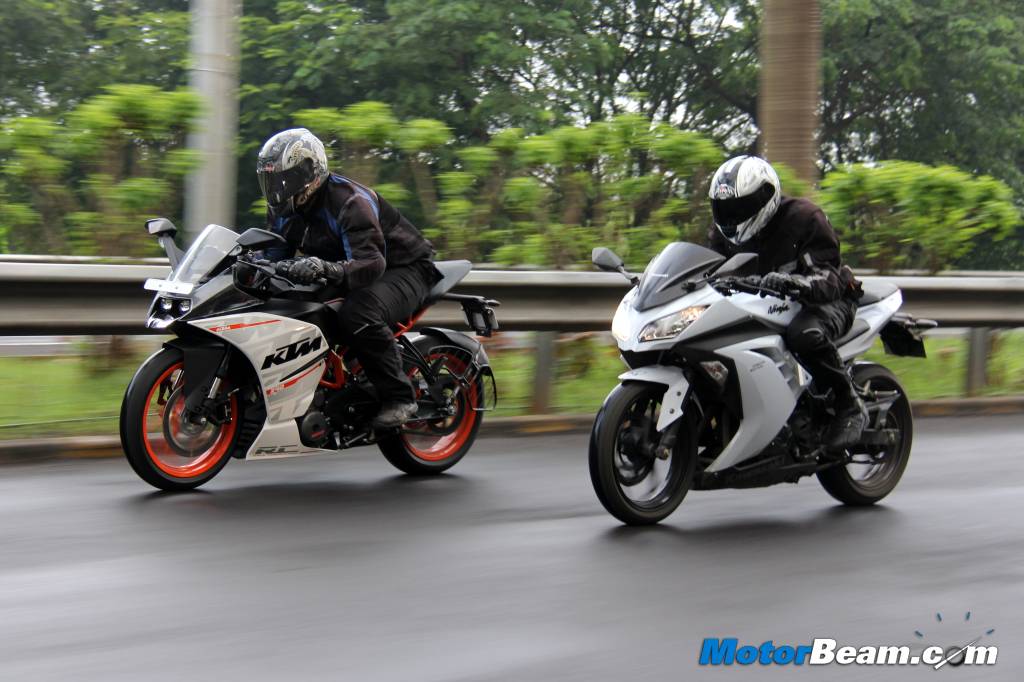
Performance – The KTM RC 390 and Kawasaki Ninja 300 are quite different when it comes to the engines powering them. While the RC 390 employs a single-cylinder motor, the Kwacker is a parallel-twin unit. The higher capacity KTM having more output, producing 43.5 PS against the Ninja’s 39 PS. The orange monster also has more torque on offer, 35 Nm against the Kawasaki’s 27 Nm. Clearly the KTM has the advantage on paper and when you factor in the weight, which is 6 kgs less on the Austrian motorcycle, the performance numbers start to tumble more in the KTM’s favour. So when we parked both bikes side by side and gave them the stick, it was the KTM which just took off, leaving the Ninja behind by a couple of bikes length.
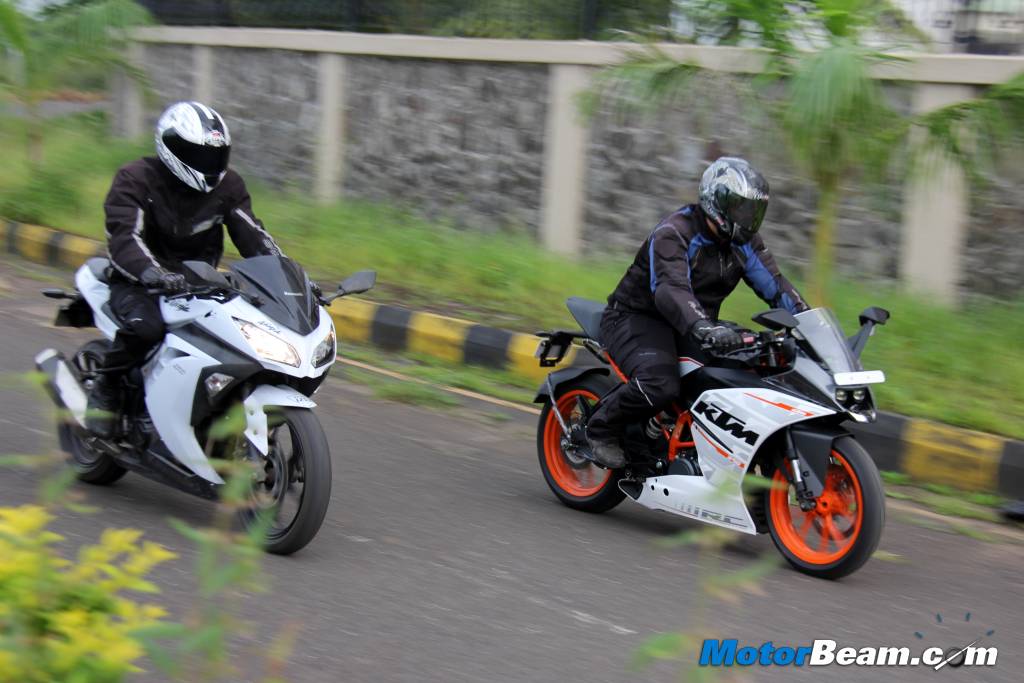
The KTM RC 390 might have faster acceleration but the Ninja 300 pulls like crazy on the top-end
It’s little mystery that the RC 390 is the faster bike here, it accelerates much quicker than the Ninja 300 and the 0-100 km/hr timing difference between both is more than a second. But all this only gives you half the story, keep going further and the Ninja 300 will start pulling back its disadvantage after 140 km/hr. By 150 km/hr the Ninja 300 comes near to the RC 390 and is almost on the verge of being neck and neck but cannot overtake the RC which just deploys its power quickly and puts it down efficiently. Till the time the Ninja 300 reaches its top speed, you start running out of roads but given a really long stretch, the Ninja 300 will overtake the RC 390, at a speed of 170 km/hr. The Kawasaki has the higher top speed (182 km/hr against the RC’s 173 km/hr) and there is absolutely no doubt that the Ninja 300 sounds much better of the two. The KTM isn’t bad because it is a screamer thanks to a faster spinning engine and throaty torque playing the music of the devil to your ears. However, the Ninja’s jet-fighter orchestra is pure aural candy and triumphs over the KTM easily.
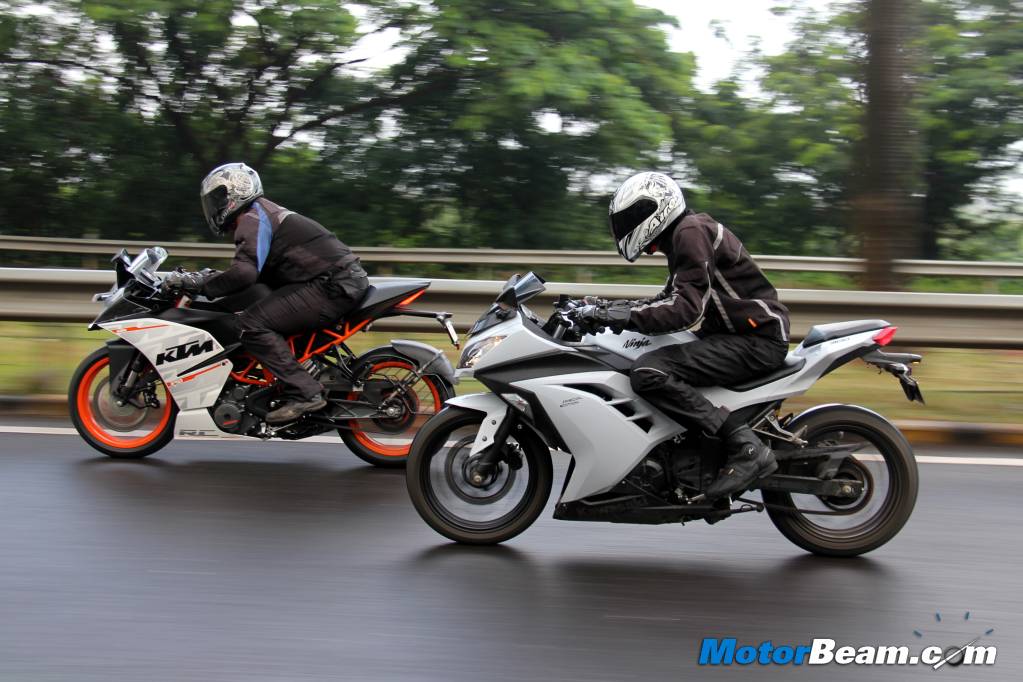
So it might seem quite even between both these machines, the KTM having better outright acceleration while the Ninja having more pull post 130 km/hr but there has to be one winner here, no? The RC 390 is very tall geared and one has to be in first gear when crawling in the city, not the case with the Ninja whose ride-ability around town is fantastic, the Kwacker never heats even in stop-go traffic, the KTM does but the heat dissipation is managed better on the RC (the engine still heats with full bars on the meter but you don’t feel the heat anymore), compared to the Duke. Still, the real master of getting heat out of the bike is Kawasaki as so evident by the way this motorcycle maintains its cool. While the RC 390 won’t go past 10,500 RPM, the Ninja 300 has a mad redline of 13,000 RPM and boy what a feeling it is to redline every single time.
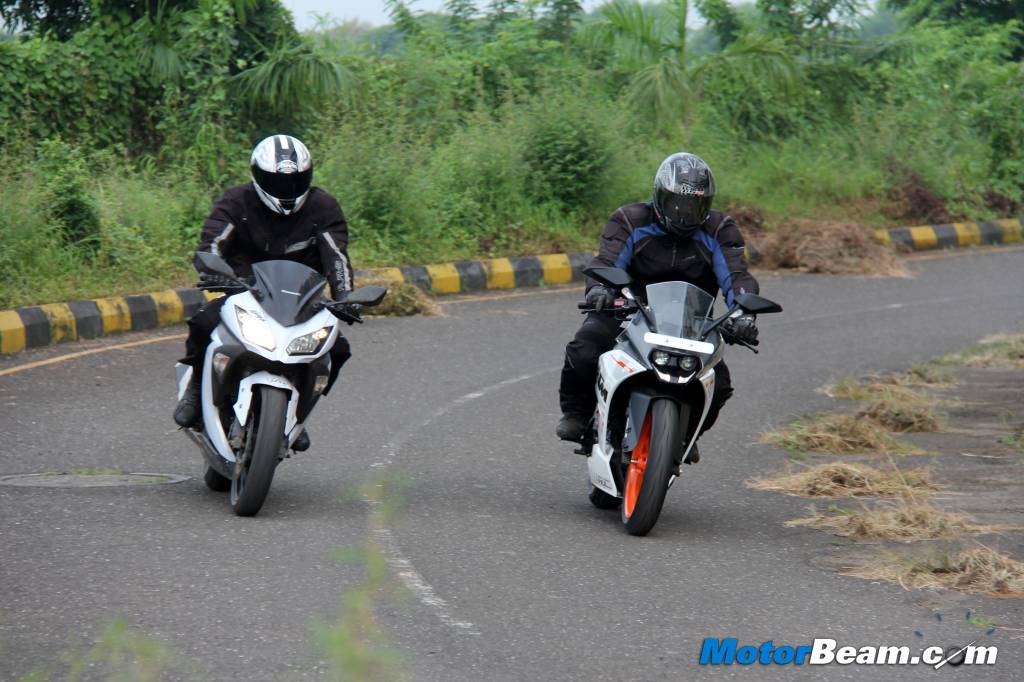
You really don’t have to redline the RC 390 to have fun though as the mid-range is very strong and once past 6000 RPM, you are in for a treat. The RC is more urgent while the Ninja is a bit sedate in comparison, only becoming crazy past 7000 RPM when the parallel-twin wakes up and nuclear reaction takes place. Being a twin, the Kawasaki excels when it comes to in-gear acceleration too. The Ninja is more frugal as well (it also has an Eco indicator which helps extract more economy) although the difference isn’t a world apart (the 300 will return 2-3 km/l more when ridden in the same manner). Meanwhile the RC 390 returns an overall mileage of 27 km/l, so calculate. Even with similar mileage, the tank range on the Ninja 300 is drastically more, it has 7 more litres of capacity in its tank which means less fuel stops and more riding.
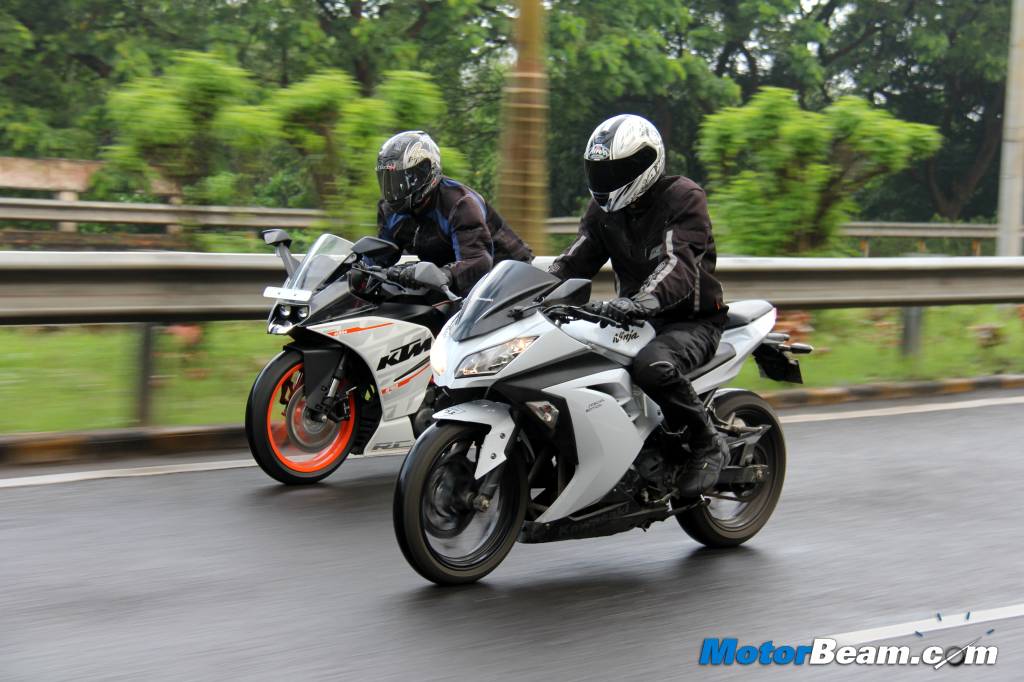
If you ride both bikes back to back, you are more likely to rush to the Ninja, it’s way more refined, there is absolutely no vibrations and the spot-on fuelling means there is no jerkiness either. Not the same case with the KTM as there are minor vibes but the madness of the machine masks it quite well. Both bikes use a 6-speed gearbox but the clutch and gearshift on the Kawasaki is much better, almost butter smooth. The Kawasaki also gets a slipper clutch which continues to be a first in segment feature which isn’t available on any mass market motorcycle yet. It lets you aggressively downshift without having to worry about wheels loosing traction. Everything considered, if you want total madness then the RC’s motor is the one which will please you but overall the Ninja’s powerplant is more superior.
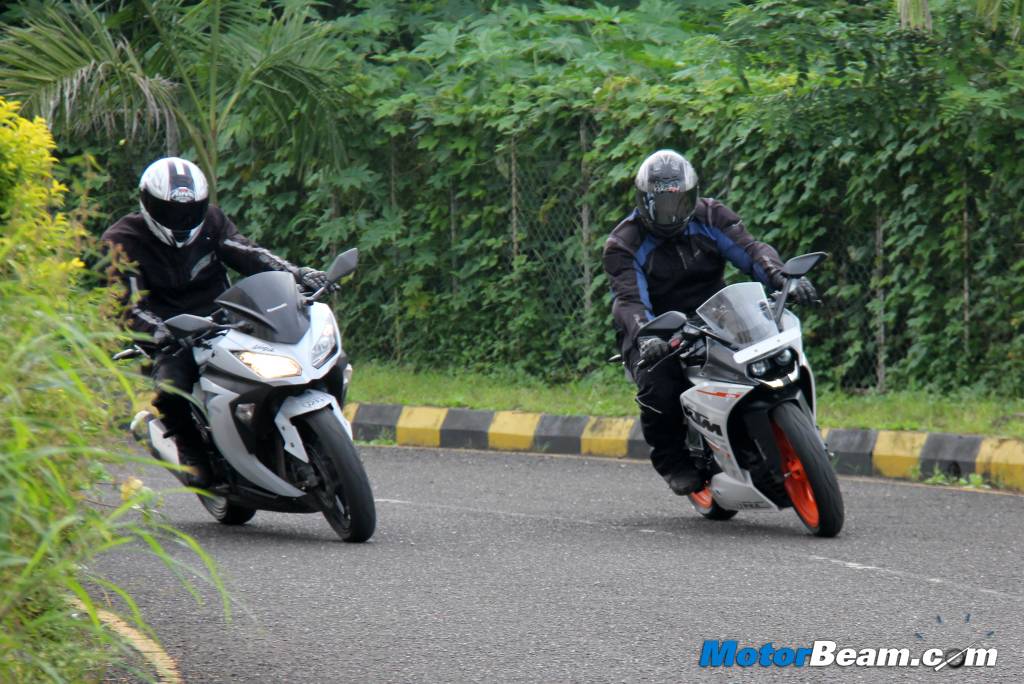
Riding Dynamics – Hardware differences between both these bikes is massive, the KTM uses a trellis frame and upside down forks while the Kawasaki settles for a semi-double cradle chassis with telescopic forks. The KTM is richer on hardware and what further tilts the favour towards the orange wheeled machine are the tyres, the Metzeler rubber having a ton more grip than the Kawasaki’s IRC. With a sharper steering rake, more aggressive riding position, stiffer suspension and a more taut chassis, the RC 390 easily manages to be the better handler here with more agility and quickness on-board. The Ninja feels lazy in front of the RC 390 but isn’t that bad, it’s just the RC which is just too good and has the precision of a race bike.
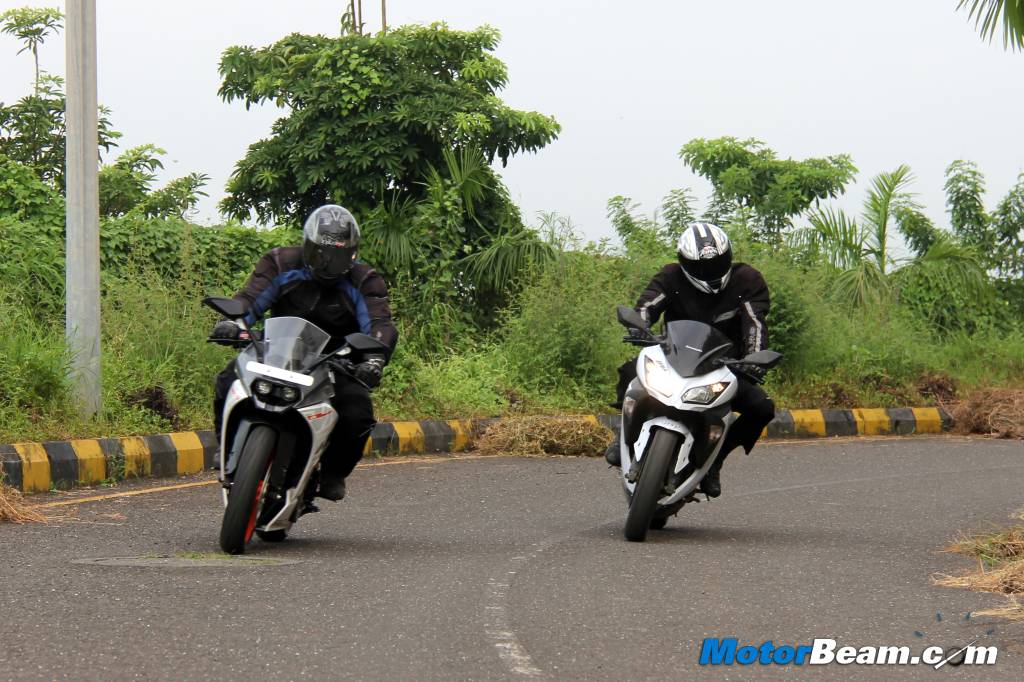
The brakes on the KTM are better with feedback but the front lacks initial bite while the rear is wooden. Another fact is that ABS is standard on the 390 which makes braking confidence inspiring, Kawasaki doesn’t offer ABS on the Ninja 300, not even as an option. There are no steel braided lines on the Kawasaki either which is offered on the KTM. While the KTM lacks in terms of brake feel, the Kawasaki does not but when it comes to braking power, the KTM wins hands down. Both bikes are stable at high speeds and wind blast is well contained. KTM clearly seems to be the better bike in the dynamics department but the Kawasaki annihilates the RC when it comes to ride quality. The RC 390 is quite stiff and it doesn’t like bad roads, the Ninja on the other hand simply glides over the worst of tarmac. The suspension of the Ninja is tuned to handle even the worst of terrains and in spite of that, dynamics are still very good. So if you want comfort and handling, the Kawasaki is the better machine but if knee down riding is your only mantra, then the KTM is a no brainer here.
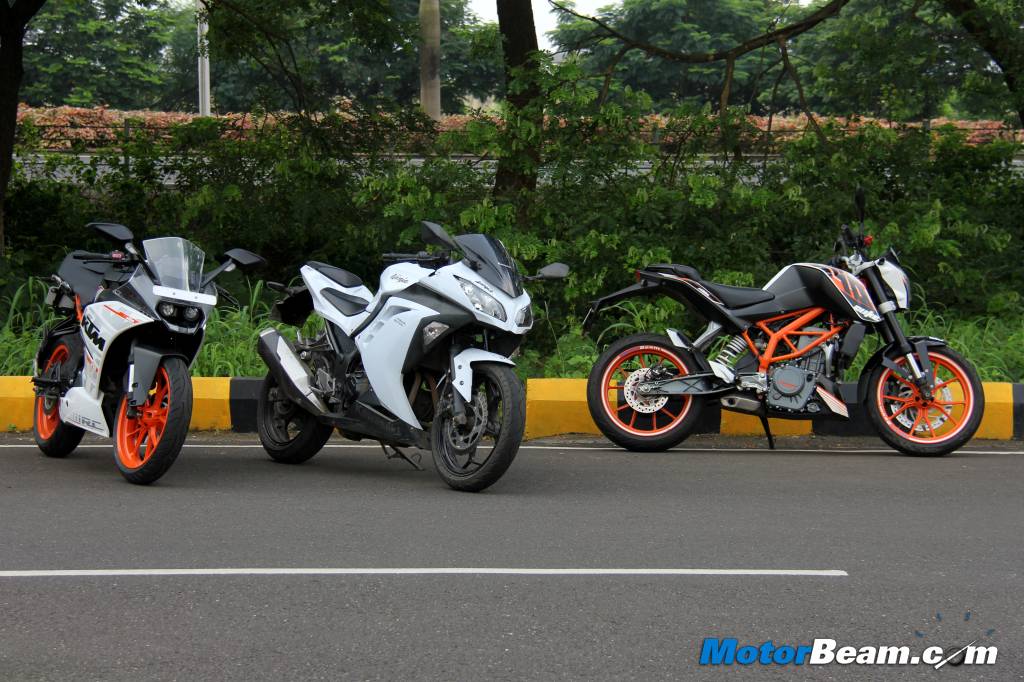
Verdict – These two bikes are the hottest performance bikes you can buy in India currently. Both are sold through the same dealership and serviced by the same people at the same place (the KTM is cheaper to live with due to lower cost of parts but build quality and finish of the Kawasaki is much better). So who sweeps away victory in this shootout? It’s difficult to crown a winner here. Both bikes are poles apart in character, the RC 390 being more track focussed and although it’s the quicker bike here, the Ninja 300 is more refined and much more suited to urban duties. The KTM has more goodies and costs a whooping Rs. 1.56 lakhs less too so if value for money is your thing, the RC 390 is simply unmatched. But as a motorcycle, it’s still the Kawasaki Ninja 300 which is the better machine, it can do all that the KTM can (not with the same precision though) while also doing a lot more which the Austrian bike can only dream off. The Ninja 300 can take you to office everyday without a fuss, perform quite well on the track (not pint point precise as the RC 390) while on the weekends, you can simply pack along and go touring. This jack of all traders character of the Ninja 300 comes at a price and if you ready to pay for the better engineered product, then the Ninja 300 is the one to get.
The KTM RC 390 is faster, sharper and much cheaper to buy and service but the Kawasaki Ninja 300 is better in several aspects like comfort, ride quality, build, design and feel. If you can afford the exorbitant price of the Ninja 300, then the price paid over the RC 390 is well worth it, as you get a better bike.
Further Reading –
Kawasaki Ninja 300 vs KTM RC 390 – Video
Kawasaki Ninja 300 Review
KTM RC 390 Review
KTM Duke 390 vs Kawasaki Ninja 300
KTM Duke 390 vs KTM RC 390
Kawasaki Ninja 300 Travelogue


